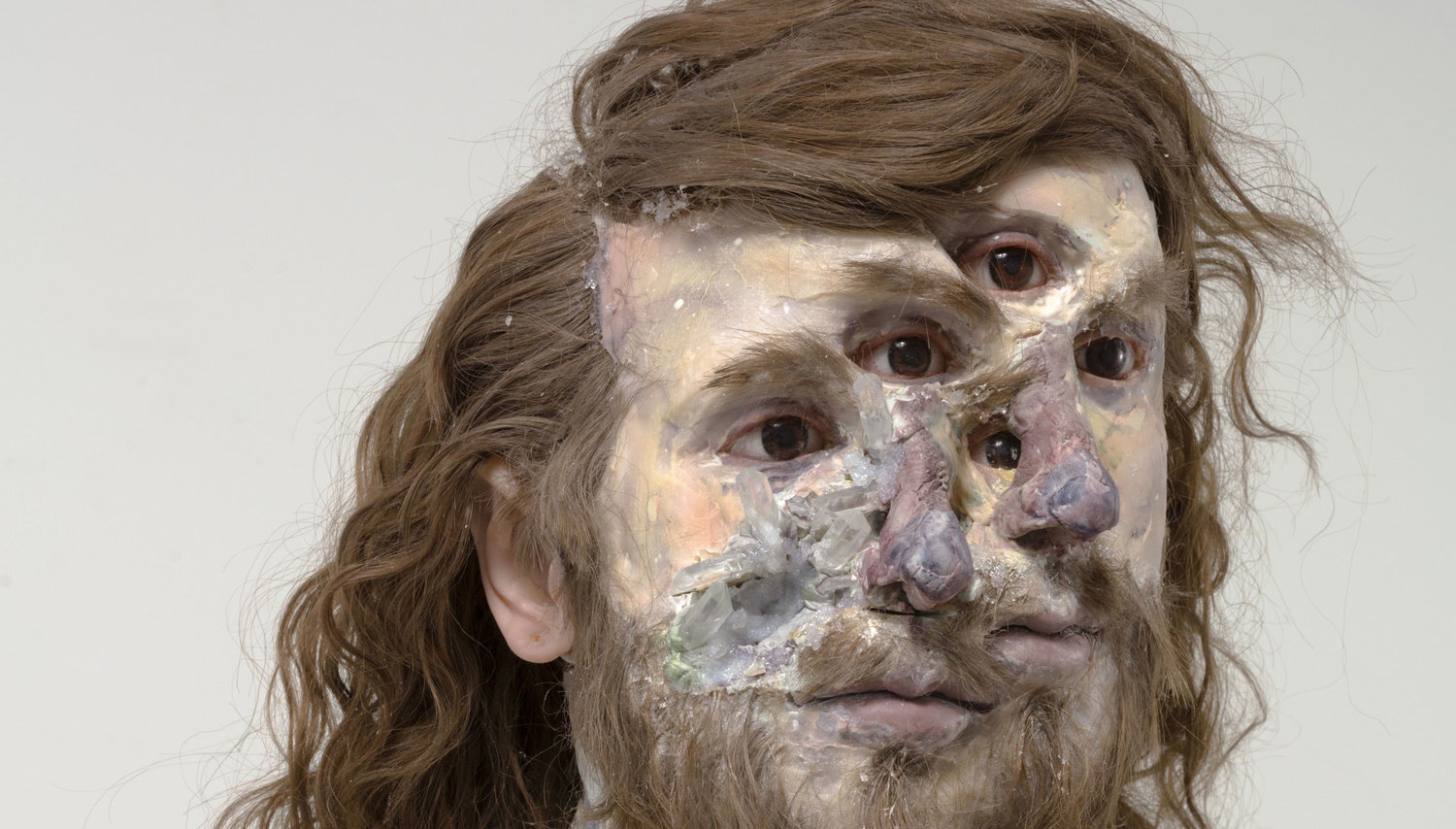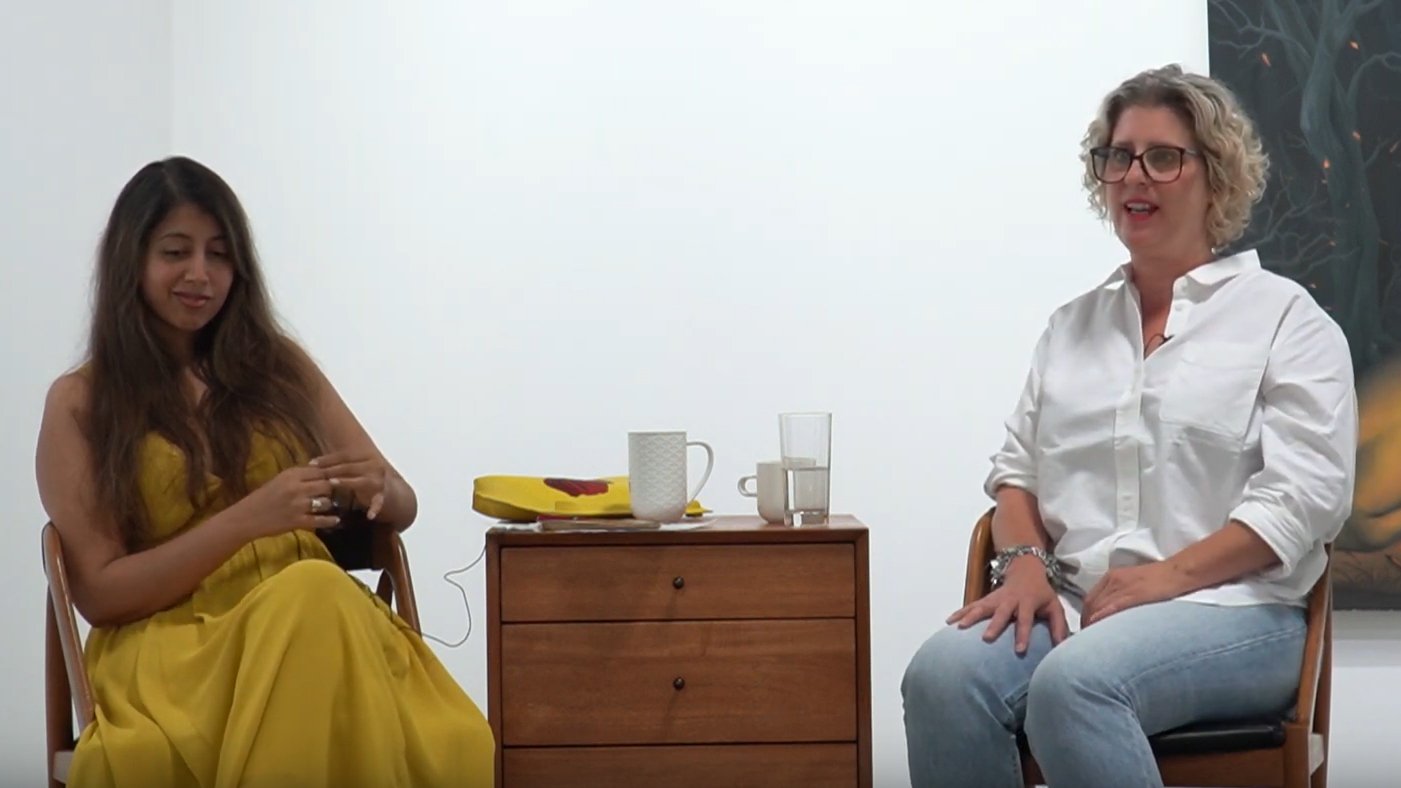In Conversation: David Altmejd
INTERVIEW
BY ANNA KOVLER
Published Sept 9, 2019
David Altmejd’s practice is often beyond words. In breadth and variety that is astounding, he has given rise to werewolf heads and surreal humans beyond wild imagination. Like a haunted house where friendly beings cohabit with menacing ones, Altmejd’s sculptural world shocks and comforts the wandering traveler. His dreamlike characters become fangled, starry eyed, and develop crystal hearts almost at will. Animals and people alike sprout bejeweled wounds that oscillate between malignant and benign, leaving us to wonder whether this malady will kill the patient or perhaps enlighten them with its radiant energies.
Contradiction effuses Altmejd’s decades-long practice, and shows no signs of letting up. His newest busts delve even further into the territory of revelatory discomfort with their multiplied eyes, mouths and chins. It induces vertigo in the instant of looking at it. Evoking the history of Surrealist arrangements with mannequins in disturbing positioning, these works have an unnerving now-ness as they wear the crystals, makeup, and body enhancements that mark a consuming, vain, and often-pitiful mainstream culture. An antidote to notions of “looking better,” or even looking like anything at all permeates Altmejd’s oeuvre, and it’s a pill worth swallowing.
I spoke with David to find out what metaphysical sensibilities drive his practice and what animal he wishes he could transform into.
Anna Kovler: in your most recent sculpture that I saw at Essex Flowers in New York, the figure is splitting apart, and expanding into a wider, repeating version of itself. There are three noses and each eye has become three eyes. What does this repetition mean to you?
David Altmejd: Well it’s very connected to psychedelics, and maybe its something I’ve experienced on psychedelics that has to do with detaching yourself from space and physicality. It’s about experiencing something outside of time and space, and it's a way of trying to represent the body that experiences a detachment from physicality. So it's quite paradoxical. I’m making an object that is a very physical object, but it's trying to represent a state that is transcendental, a state that transcends physicality. So there is a disconnect between those things, and I like that tension a lot.
AK: Is there a spiritual dimension to your work?
DA: Absolutely there is, and I’m becoming aware of the ultimate as something that is very important to me. I can relate to the historical Baroque as trying to represent something ultimate, and trying so hard but never getting there, because it’s impossible to represent it. I think in the Baroque there is a kind of acceptance or appreciation of just the process itself - the process of trying to represent the ultimate - even though you know you will never get to that point. If this produces an artwork that is overly floral or too complicated, it’s not a failure! It just becomes a kind of celebration. I see that in my work as well.
AK: You make lots of busts, Are you ever working with portraits of people? Or are these archetypal figures?
DA: They’re never particular people. They just emerge from the process. I usually build the face around the eyes, so I place the eyes in a semi-random way, and the eyes, the way they appear in the sculpture is never controlled or intentional … they just appear, and hold personality, and they define the shape of the face itself. But sometimes I look at images of people but its not really to recreate the sense of the person, its just to use a model if I don't remember how an ear looks, or I’ll just look online at a photo of a chin or cheek bones. It’s quite practical.
AK: Do you ever come back to an archetype in your portraits?
DA: For some reason, my figures always used to look the same; same sort of nose, same sort of mouth, and I don’t know who it is! It’s not me. I know that it’s a man, and he might be Jewish. Sometimes I see people in the real world and I think oh my god he looks exactly like my work, and I wonder, what is it about that face that I try to recreate all the time? There is a sort of neutrality to that face. Maybe on some level it’s a version of me or my father.
And it could also be Jesus. Jesus has been really important for me in a strange way, he finds his way into my work. I think a lot about him. In my recent sculptures there is a bearded guy with long hair, and maybe it’s Jesus. In my recent sculpture Crystal System (2019) I was really aware of that one as Jesus. It’s all intuitive though, I wouldn't be able to say why he’s finding his way into my work. I guess I find him mysterious. And it also has to do with all the reflection that I’m doing around consciousness and the psychedelic expedience and truth and love.
AK: Many of your sculptures are quite dark, with big gashes in people’s faces, or other gnarly wounds. Do your sculptures ever scare you once you made them?
DA: No, they don’t. It's actually the opposite, they reassure me. Though, sometimes I do get afraid when I’m making them. There is a moment when I feel fear, and it’s a very specific moment when I’m working on the sculpture late at night and I get really nervous and afraid, because it feels like there is something in the air. And it’s not because of what the object represents, it just feels like the connection between the object and me just opened up a space in another dimension and that is really scary. It gives me the feeling that wow, there is really something happening, as if some sort of portal or an energy got triggered, like a door was opening.
AK: If you could transform into an animal, which animal would you be, and why?
DA: I think there has always been in my mind a connection with dolphins, but I don't know why I’d want to be a dolphin. It must be really claustrophobic to live underwater. But still I feel like it’s my spirit animal. I’d like to be a dolphin and look at myself as a human, at my human body; I think a lot would be revealed there.
AK: I know this is a hard question, because you work with so many materials, but what is your very favorite material to work with?
DA: There are a few things. Sometimes it’s the eyes. Sometimes I make the eyes myself and then paint them. Other times I use glass eyes. It’s carving or painting them, or installing them that are really powerful moments. I also use a lot of quartz in my work, and the moment when I install the quartz is special. I find paint to be very moving too. When at the end of the process I add touches of color here and there, that really gives another dimension to the object and adds a sort of life; and that is existence for me.





